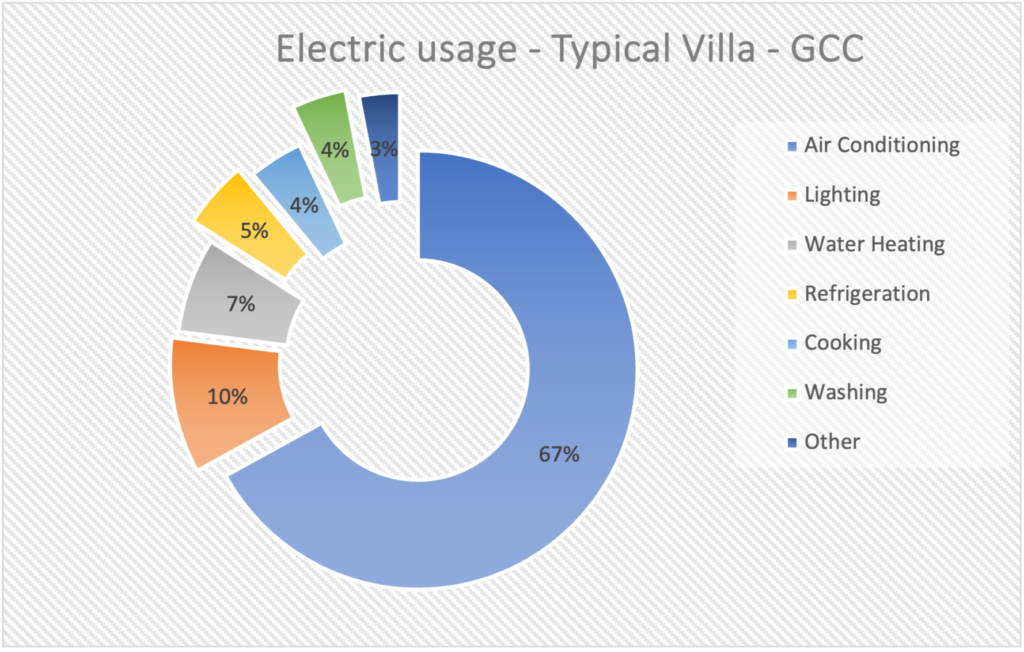Saying that appliances are at the core of net-zero initiatives, Dalip Singh presents the first in a series of three articles covering the importance of appliances in the context of energy efficiency, their policy framework, and the societal and environmental benefits
While this article covers general aspects of the above scope, the second article, in the month of April, will cover regulations & MEPS, including how those are designed; the third article, in June, will focus on labels and incentives. For now, let’s focus on laying the ground on the topic of appliances.
Why is appliance energy efficiency important?
Appliances are at the core of net-zero initiatives, due to their widespread presence typically in every household the world over. In developed countries, household appliances typically account for a significant portion of residential electricity consumption. According to the U.S. Energy Information Administration (EIA), in the United States, about 60% of residential electricity consumption is attributed to appliances, electronics, lighting and other equipment.
The Brainy Insights reports that the global household appliances market was valued at USD 600 billion in 2022 and is expected to reach USD 1 trillion by 2032. The Middle East and Africa Home Appliances Market is poised to grow at a CAGR of five per cent by 2028.
The electricity consumption per capita in the GCC region countries is highly ranked worldwide and increasing by the passing of every year in many of the countries. The usage of appliances at a vast scale is one of the important rationales behind this increase, apart from the low quality of the building envelope, a large building area and occupant behaviour. The total annual electricity consumption per capita in the GCC region countries was between 7,000 and 18,000 kWh, whereas the global average was approximately 3,000 kWh in 2018.

The growing use of personal electronic devices and appliances, including televisions, computers, office equipment and smart phones, releases heat into the ambient air and increases the need for space cooling in buildings. The use of any appliance impacts energy use in buildings in two ways:
Appliances efficiency policy: Framework
National appliances regulations have been in existence since the 1970s and have since proliferated. As of 2021, Energy Efficiency Standard & Labelling (EES&L) programmes have been in existence in more than 120 countries around the world and have been applied to more than 100 types of appliances and equipment in the commercial, industrial and residential sectors. While the design and coverage of EES&L programmes vary according to national circumstances, they provide the cornerstone of most national energy and climate change mitigation programmes.
Typically, EES&L programmes use one or both of the following complementary tools as the basis to improve the energy efficiency performance of appliances and equipment:
These two measures may be complemented by other policy measures, such as subsidies and rebates to help transform markets.
MEPS, energy labels and subsidies/rebates are collectively referred to as “Energy Efficiency Appliances Policy Package”, and will be covered in more detail in the upcoming two articles in subsequent editions of Climate Control Middle East magazine.
Appliances efficiency policy Impact: Energy System and CO2
A 2021 International Energy Agency (IEA) report states that the longest-running EES&L programmes with the largest product coverage have collectively reduced their countries’ total annual electricity consumption by about 15% of their country’s total electricity consumption. Around two-thirds of these savings are seen in the residential sector, while savings in the services and industrial sectors each account for one-sixth of the total.
The following nine economies – Australia, Brazil, China, EU, India, Malaysia, Mexico, South Africa and the United States – together saved approximately 1,580 TWh in 2018. It is estimated that global savings of around 3,500 TWh could have been realised in 2020, if all countries had adopted similar measures, roughly equivalent to halving the total electricity consumption of China.

Under these programmes, new, more efficient products are continually entering the market and replacing older, less efficient ones, compounding the energy savings year after year, as the overall stock of appliances becomes more efficient.
EES&L programmes also extend beyond electricity to cover Oil & Gas-powered space and water heating. Given that fossil fuels still dominate the energy mix, energy savings through EES&L programmes also lead to substantial CO2 emission reductions, making the recorded greenhouse gas emission impacts attributable to EES&L programmes equally impressive. In the United States, MEPS avoided 343 Mt CO2 in 2020, equivalent to 7.1% of all national energy-related emissions for 2019.
Appliances efficiency policy impact: Costs, employment and household incomes
EES&L programmes are highly cost-effective, with energy cost savings often many times larger than any increases in the cost of purchasing products or administering the programme. Usually, regulators end up estimating a higher cost of meeting efficiency requirements than the actual. In fact, most products in countries with EES&L programmes have become both more efficient and cheaper over the duration of these programmes. Falling consumer purchase prices suggest that more stringent policy settings still deliver net consumer benefits. EES&L programmes are one of the lowest-cost policies available to reduce CO2 emissions.
EES&L programmes also directly create jobs in manufacturing, wholesale, retail and maintenance, and indirectly through the spending of fuel cost savings in the local economy. While direct job creation is significant, the creation of indirect jobs can be 3-5 times larger. In Australia, an estimated 59,000-236,000 people work in roles related to the energy efficiency of residential and commercial buildings.
Appliances efficiency policy impact: Energy consumption of appliances
EES&L programmes typically reduce the average energy consumption of most new products around 2-3 times faster than similar products not covered by such programmes. Average annual improvement rates for new appliances’ energy consumption are primarily determined by the stringency of policy settings within EES&L programmes and the frequency at which they are updated. EES&L programmes set the bar for new products entering the market, raising the average efficiency of all products in use over time. Average energy reductions between 10% and 30% are usual to achieve over moderate time frames for the stock of most regulated products.
The Japanese Top Runner Programme is one good example of an EES&L programme where the average expected improvement rate across all products (total 19) was 24%, while the average improvement rate achieved was 33% over a time frame of 5-8 years.
Appliances efficiency policy impact: Innovation and appliance product prices
EES&L programmes have been an important driver of innovation in appliances and equipment since beginning. The need to meet performance requirements has demanded the invention of new technologies, manufacturing techniques and control systems that would not otherwise have been widely adopted.
Some EES&L programmes also foster innovation through advanced signalling of future efficiency requirements. This is achieved by adopting the previously highest energy label grade as the new minimum performance level at regular intervals.
EES&L programmes worldwide have also supported the widescale adoption of inverter technology in the air-conditioner industry, a significant change that provides a range of consumer benefits, especially lower energy bills. By developing new air conditioner test methods and metrics that are more representative of consumer behaviour, EES&L programmes have helped demonstrate the real-life advantages of inverter technologies over conventional equipment to consumers.
Other “co-benefits” from EES&L programmes include improvements to people’s comfort, health and finances, leading to stronger, more resilient regional economies. Devices that are both energy- and water-efficient, such as low-flow showerheads, dishwashers and washing machines, can considerably reduce water consumption and sewage output. The most effective means of improving the energy efficiency of such products is to reduce the amount of water that is required for them to fulfil their function.
The main health benefit of energy-efficient equipment is reduced air pollution, thanks to reduced direct emissions from the combustion of gas, oil, coal and biomass for cooking, and for space and water heating, as well as reduced indirect emissions from the burning of fossil fuels to produce electricity.
In summary, EES&L programmes are the “quiet achiever” among energy policies delivering large energy and cost savings and enabling the transition to a cleaner energy future. Reflecting the increasing recognition, EES&L programmes have continued to grow in quantity to a greater number of countries and in scope to include a wider range of appliances and equipment.
References:
Copyright © 2006-2025 - CPI Industry. All rights reserved.